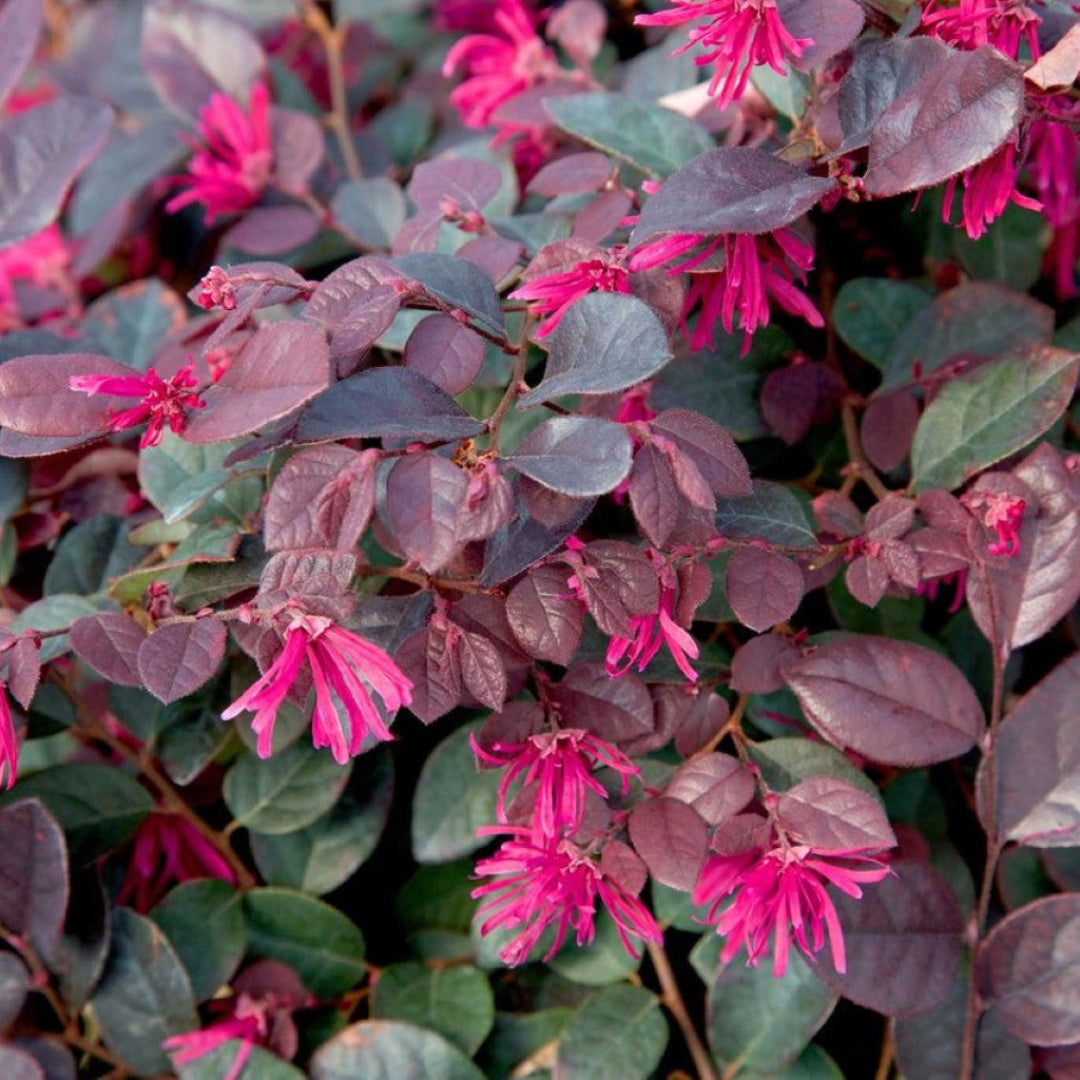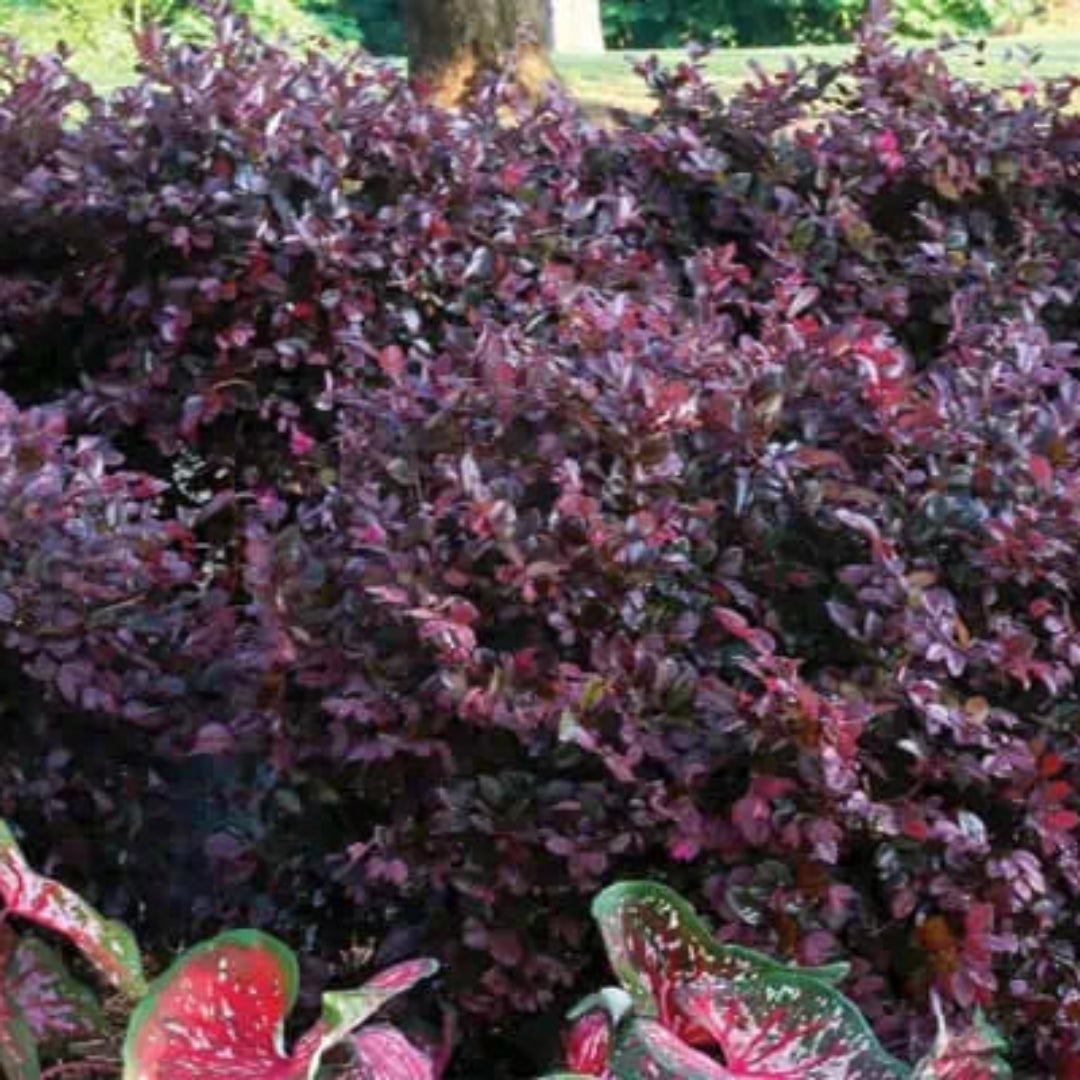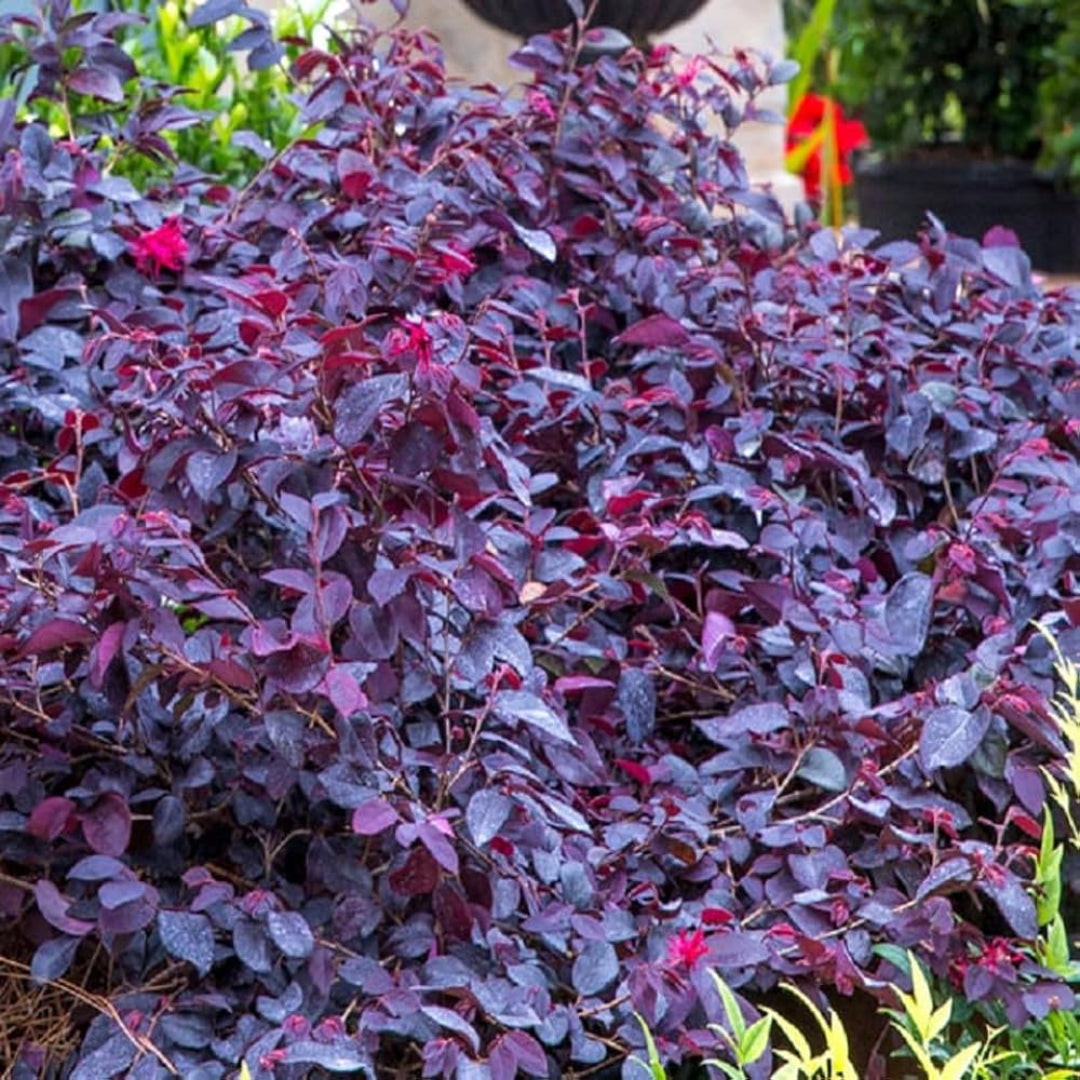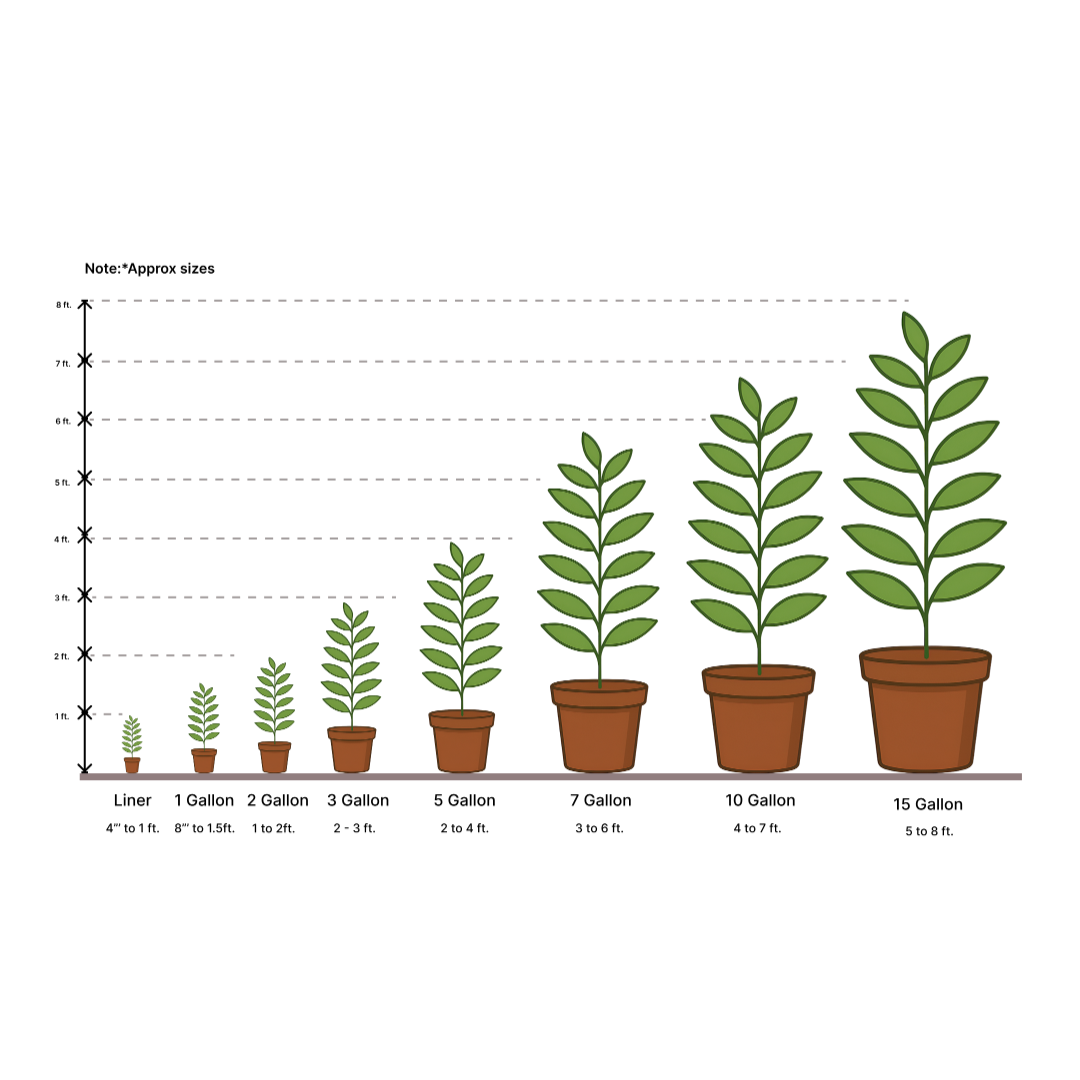





Product Details
Description
Zones

Plant Care Tips
Local search
Customer Service
Pixies Gardens
2024 Mcdaniel Mill Road Conyers GA 30094
Email: cs@pixiesgardens.com
Frequently Asked Questions
What is the Purple Diamond Loropetalum?
Purple Diamond Loropetalum is a compact evergreen shrub known for its deep burgundy-purple leaves and bright pink fringe-like flowers. It’s ideal for landscape borders, foundation plantings, and container gardens.
How big does Purple Diamond Loropetalum get?
This shrub usually reaches a height and width of about 3 to 4 feet. It forms a wide. It forms a neat, rounded shape that's suitable for small spaces or layered garden beds.
Does Purple Diamond Loropetalum need full sun?
Yes, it thrives best in full sun and partial shade conditions. At least 6 hours of sunlight daily to maintain vivid foliage color and encourage heavy blooming.
When does this purple diamond Loropetalum bloom?
Expect vibrant pink fringe flowers in early spring, with occasional reblooming in summer and early fall if cared for properly.
Is Purple Diamond Loropetalum drought-tolerant?
Yes, once established, they become moderately drought-tolerant. However, consistent watering during the first growing season is essential for healthy root development.
What USDA zones are suitable for growing Purple Diamond Loropetalum?
This plant thrives in USDA Zones 7 through 10, making it suitable for warmer climates with mild winters.
Is Purple Diamond Loropetalum suitable for container planting?
Absolutely! Thanks to its compact size and slow-to-moderate growth, it makes a beautiful choice for patio containers and decorative pots.
How do I prune a Purple Diamond Loropetalum?
Lightly prune after spring blooms to shape the plant or remove dead branches. Avoid heavy pruning in late summer or fall, which may reduce next season’s flowers.
Does Purple Diamond Loropetalum shed its leaves in winter?
No, it is an evergreen shrub, meaning it retains its colorful foliage throughout the year, even in winter.
Is Purple Diamond Loropetalum deer resistant?
Yes, it is usually regarded as deer resistant, although hungry deer might nibble on nearly any plant if it is stressed.









